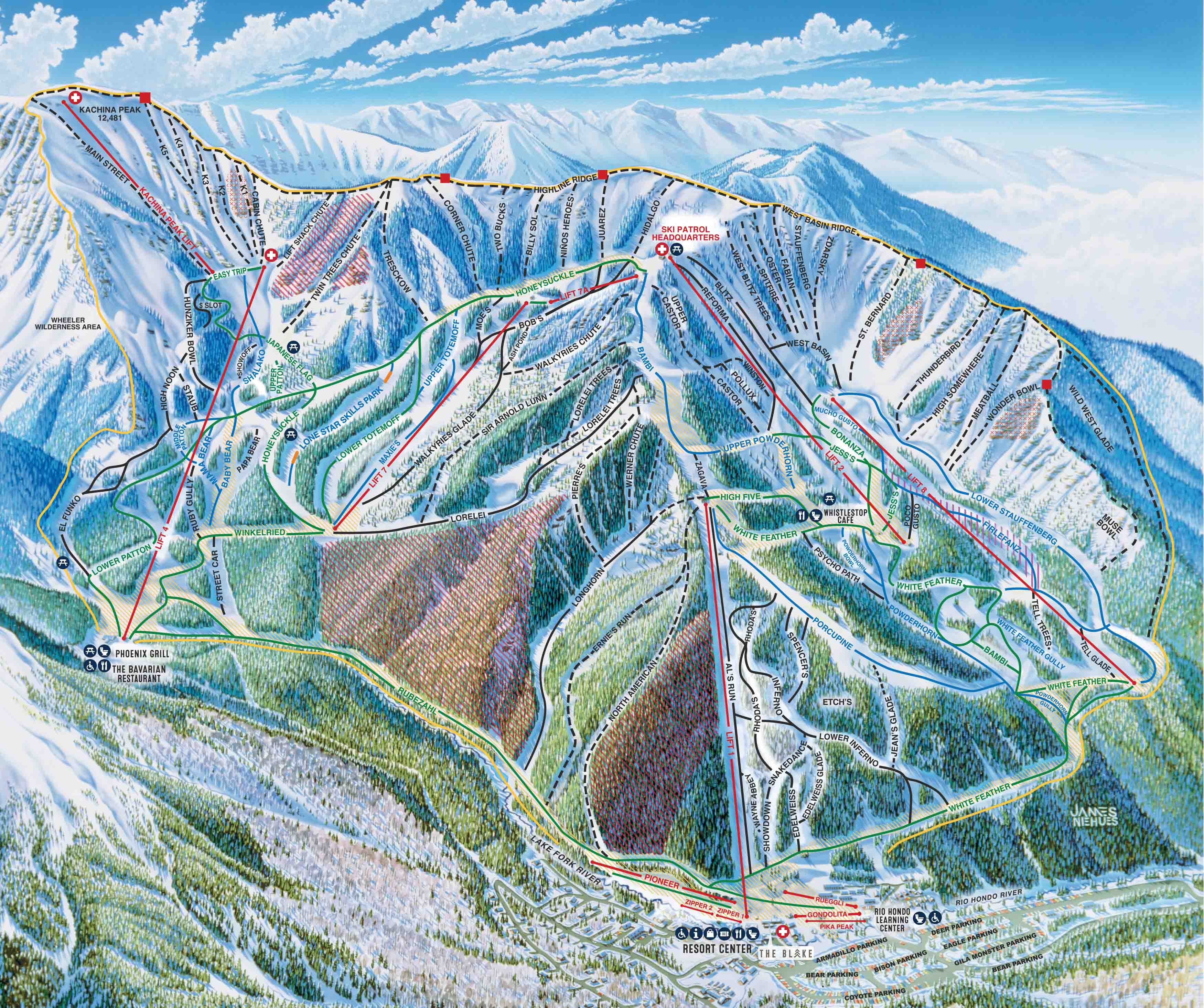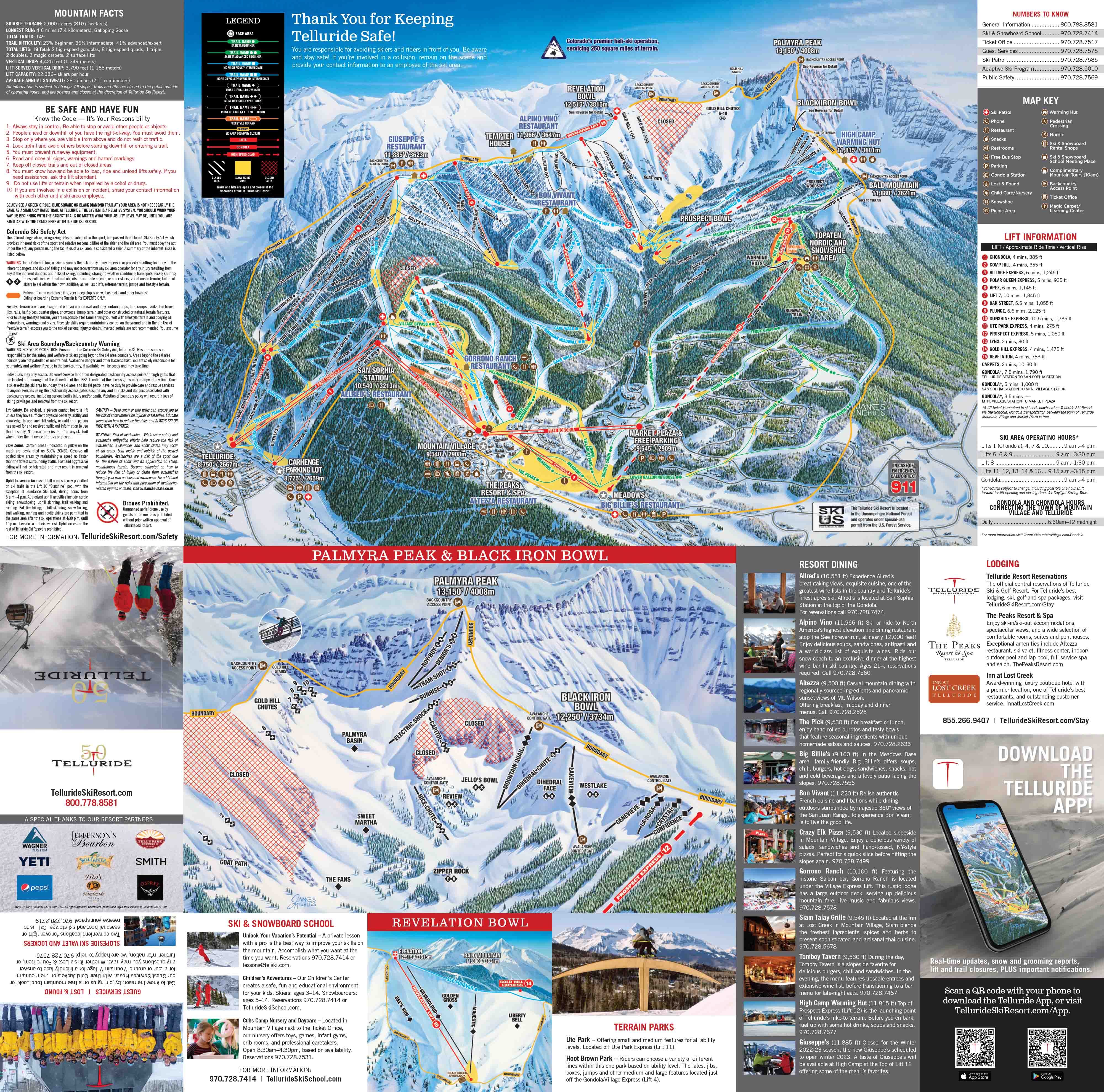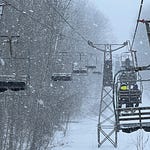Who
Tim Cohee, President and General Manager of China Peak, California and President of California Mountain Resort Company

Recorded on
June 19, 2023
About China Peak
Click here for a mountain stats overview
Owned by: California Mountain Resort Company
Located in: Lakeshore, California
Year founded: 1958
Pass affiliations:
Cali Pass – Unlimited access
Indy Base Pass – 2 days, potential blackouts TBD
Indy+ Pass – 2 days, no blackouts
Powder Alliance – 2 days, potential blackouts TBD
Reciprocal partners: None (Cali Pass includes Powder Alliance + unlimited access to Mountain High and Dodge Ridge)
Closest neighboring ski areas: Badger Pass (2 hours, 45 minutes), Dodge Ridge (4 hours, 1 minute)
Base elevation: 7,030 feet
Summit elevation: 8,709 feet
Vertical drop: 1,679 feet
Skiable Acres: 1,200
Average annual snowfall: 300 inches
Trail count: 54
Lift count: 11 lifts (2 quads, 4 triples, 1 T-bar, 4 carpets) - Total includes Chair 6 upgrade from a double to a fixed-grip quad this summer; China Peak also plans to replace the Firebowl T-bar with a used quad from Taos in 2024 - view Lift Blog’s inventory of China Peak’s lift fleet
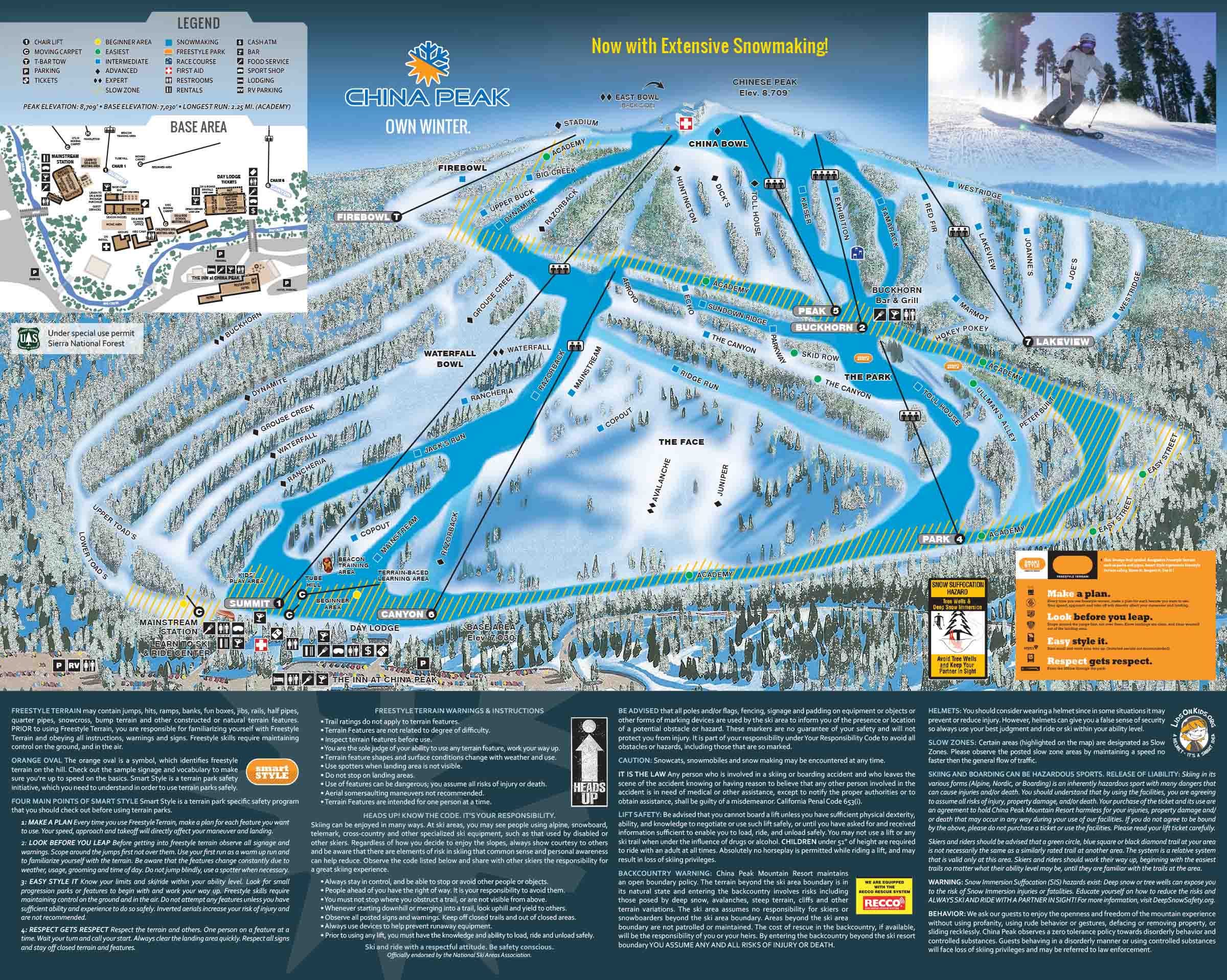
Why I interviewed him
The Storm Skiing Podcast is not yet four years old, but it is established enough to have hosted several repeat guests: Indy Pass founder Doug Fish (four appearances), Boyne Resorts CEO Stephen Kircher (three), Alterra chair Rusty Gregory (three), and snowsports columnist Shaun Sutner (two, with a third scheduled for November). Magic Mountain, Vermont President Geoff Hatheway and Berkshire East/Catamount owner Jon Schaefer have also appeared twice.
What makes a good repeat guest? Many things. Fish, Kircher, and Gregory oversee rapidly changing and expansive portfolios whose evolutions shape the lift-served ski landscape as a whole. Hatheway and Schaefer guide small operations, but they are among the most original thinkers in skiing. Sutner brings deep experience and perspective to the layered New England ski scene.
Tim Cohee fits into the Hatheway/Schaefer camp. Anyone who listened to my first podcast interview with him, in 2021, knows this. He brings a West Coast moxie and brashness to the rough-and-ruthless Sierras, tempered by the humbling realities of operating mountains in the fickle range over four-plus decades.
The Storm, in general, is more interested in place over person. I don’t seek out whacky characters or eccentrics. They may be captivating in an oddball way, but I need to find the individuals who actually make things happen, who, through will or persistence or luck or planning help shape our collective lift-served ski experience.
Sometimes, however, you get both charisma and decision-making. Would I be running my second podcast focused on a mid-sized California ski area if it were owned and operated by someone else? Maybe. But probably not. At least not so soon. This is a hyper-regional mountain, isolated and hard to reach for anyone who doesn’t live in or near Fresno. It’s 65 miles and an hour and a half off the expressway – time that most SoCal drivers are going to use to keep moving north to Mammoth or Tahoe.
But here we are, back in the parking lot at the end of highway 168, for the second time in two years. You’ll understand why once you click “play.”
What we talked about
China Peak’s record-smashing snowfall this past season; when big snow equals big problems; how running Kirkwood prepared Cohee for a huge 2022-23 at China Peak; weathering nine droughts in 11 seasons; selling the ski area to California Mountain Resorts Company; Karl Kapuscinski, “mountain guy”; the Cali Pass; “I wish I was partners with Karl 10 years ago”; doing your best work in your ‘60s; “there’s no better investment company in the country in the ski business than Invision Capital”; the long-term potential for California Mountain Resort Company (CMRC) to by more ski areas; potential for Powder Alliance to morph into a revenue-generating pass; Doug Fish and the Indy Pass; whether Powder Alliance could expand outside of the West in North America; how Epic and Ikon have lifted small ski areas; how China Peak works together with Dodge Ridge and Mountain High as a collective; how Covid supercharged China Peak’s business; why Ross Blackburn bailed out China Peak; the “smartest guy ever in the American ski industry”; why China Peak finally invested in a real snowmaking system and what happened when it did; this summer’s Canyon lift upgrade; where a detachable lift could fit at China Peak and what sort of lift that could be; “Karl and I are passionate about mirroring as much of what the big resorts do as we can”; a Firebowl lift upgrade; another lift upgrade for Dodge Ridge; thinking through Lift 1 upgrades; why China Peak removed the Dynamite/old Buckhorn lift; why the mountain changed the name of the Exhibition lift to “Buckhorn”; “China Peak would probably be the fifth or sixth best ski area in Lake Tahoe if it was up there”; reaching for 200,000 skier visits; the problem with an East Bowl lift; why China Peak terrain expansion is unlikely; “you can put 5,500 people at China Peak and it will gobble them up”; the ski area that CMRC is trying to buy next; and why Cohee changed the name back to “China Peak” in 2010.
Why I thought that now was a good time for this interview
China Peak is making all kinds of moves lately:
After staggering along on a primitive snowmaking system for decades, China Peak finally installed a modern network in 2021. Following nine droughts in 11 seasons, this seemed like the only route to survival. Only, it hasn’t stopped snowing since. China Peak obliterated its all-time snowfall record during the 2022-23 ski season, piling up 701 inches from November to May.
In December, Cohee sold China Peak to Invision Capital and Karl Kapuscinski, an enterprise that has now reformulated as “California Mountain Resort Company” (CMRC). It was an unexpected move that continued the rollup of North America’s ski industry into conglomerates large and small, lumping China Peak in with new sister resorts Mountain High and Dodge Ridge.
In February, CMRC introduced the “Cali Pass” for the 2023-24 ski season. Renewing passholders could lock in unlimited access to Mountain High, Dodge Ridge, and China Peak for $599 ($649 for new customers). The pass, which currently runs $699, also includes Powder Alliance benefits: three days each at 19 other ski areas, including Sierra-at-Tahoe. All three ski areas continue to sell single-mountain passes, which debuted at $499/$449 renewal at China Peak (now $549), and $549/$499 renewal at Mountain High and Dodge Ridge (now $599). The Cali Pass is one of a growing number of regional ski passes that deliver multi-mountain access outside of the Epkon ecosystem.
One of the 62 lift installations rising across North America this summer is at China Peak, where Jackson Hole’s old Thunder fixed-grip quad is replacing a Riblet double on the Canyon line. Cohee discusses a second lift upgrade for next summer, for the long-defunct Firebowl T-bar.
China Peak still relies entirely on a fixed-grip lift fleet. This could change as CMRC looks to retool its portfolio for skiing’s high-speed age. That could mean big changes for Lift 1, Summit, which is currently a fixed-grip triple. Cohee thinks an upgrade to a high-speed six on that line could be among the most consequential lift replacements in the history of California skiing.
What I got wrong
I didn’t get this wrong, necessarily, but I wanted to make a note about Ski Cooper and the Powder Alliance. Cohee and I spoke on June 19 – Ski Cooper announced that it had joined the Powder Alliance on June 30. Otherwise, I certainly would have asked him about it during our Powder Alliance discussion.
Cohee and I talked through the coming lift upgrade at Dodge Ridge on the fly. We settled on a likely upgrade to Lift 5, but the resort is in fact upgrading Lift 6, from a Riblet double to a quad, for the 2024-25 ski season:
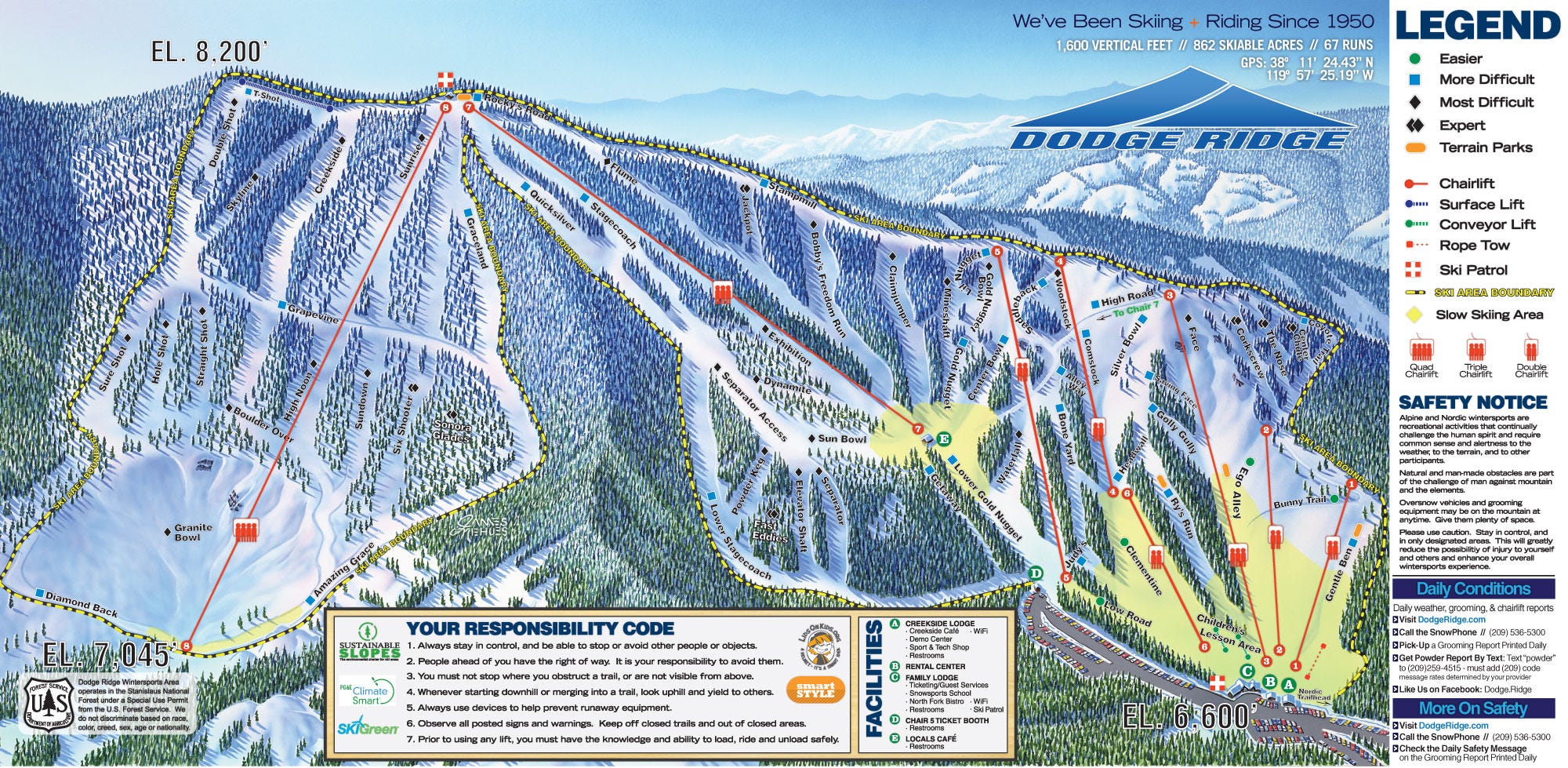
Why you should ski China Peak
It’s hard to contemplate how a ski area can be both at the ass-end of the road and in the most populous state in the nation. But that’s China Peak: an hour and a half dead east of Fresno, at the terminus of a road that just can’t quite contemplate going any deeper into the mountains. Mammoth, 28 miles away as the bird flies, is a six-and-a-half-hour drive.
You should go anyway. “We don’t even have a line on a triple chair,” Cohee tells me of China Peak’s Summit Lift, the mountain’s only top-to-bottom chair. “There’s no way you can stand in line 10 minutes. It’s not possible. Most of the time it’s two or three minutes on a fixed triple chair.” So, no one’s there, and you get a big mountain. Cohee explains: “People that have come there, that have never been there, are like, ‘how can there be a 1,700-vertical-foot mountain, fall-line skiing, steeps, long runs, fall-line runs, fantastic grooming, and all the frills, and I’ve never heard of it?’ And I said, ‘because it’s not in your market.’”
Find me something more appealing than a 1,700-vertical-foot mountain with no liftlines. Sure, you’re riding a fixed-grip lift to the top, but I’ll take no line on a slow lift over a long line on a fast lift any day. And once they drop that sixer in there? Dang.
Podcast Notes
On Karl Kapuscinski and California Mountain Resorts Company
Cohee and I talk extensively about Karl Kapuscinski, the CEO of CMRC and longtime owner of Mountain High. Kapuscinski joined me on the podcast last June (prior to the China Peak purchase), and we went deep on long-term plans at Mountain High and Dodge Ridge.
On putting a lift on hike-to terrain in Telluride and Taos
Cohee referenced the contentious history of stringing chairlifts into what had traditionally been hike-to terrain. His examples were Taos and Telluride. Taos ran a 1,095-vertical-foot triple chair up Kachina Peak in 2014, delivering easy mass access to what had been revered hike-to terrain since the resort’s earliest days. Note the lift-less Kachina Peak far looker’s left on this 2012 trailmap:

And here’s Taos today (the mountain is replacing Lift 4, a fixed-grip quad, with a high-speed detach quad this summer - that lift is being split between China Peak and Dodge Ridge for the 2024 upgrade noted above; Taos will also upgrade Pioneer from a used Yan triple to a new Leitner-Poma triple this summer):
The Telluride access issue was more complex, and was only tangentially related to the Revelation lift, which the resort installed on the backside in 2008. That lift made it slightly easier to access the Bear Creek terrain, which Powder characterized in 2014 as “a sprawling, steep, chute-choked drainage” and “some of the best lift-accessed backcountry in the country.” More:
In 2000, skiers convinced the Forest Service to put in access points on Palmyra Peak at the top of the Gold Hill Chutes. The backcountry gates were also part of a terrain expansion in the resort. Local skiers thought the problem was solved, but the debate didn’t end there. Ten years later, in December 2010, they closed the gates again due to complaints from a Bear Creek landowner. There are private inholdings in the Forest Service land in the canyon, and those landowners didn’t want skiers cutting through their property.
Read the rest to see how the problem sorted out. And here’s the Telluride trailmap for reference:
On Janek Kunczynski
Cohee referenced a conversation he’d had with “Yan Kunczynski,” saying that, “obviously he had his issues.” If it’s not obvious to the listener, here’s what he was talking about: Kuncyznski founded Yan chairlifts in 1965. They were sound lifts, and the company built hundreds, many of which are still in operation today. However. Yan’s high-speed lifts turned out to be death traps. Two people died in a 1985 accident at Keystone. A 9-year-old died in a 1993 accident at Sierra-at-Tahoe (then known as Sierra Ski Ranch). Two more died at Whistler in 1995. This is why all three detachable quads at Sierra-at-Tahoe date to 1996 – the mountain ripped out all three Yan machines following the accident, even though the oldest dated only to 1989.
Several Yan high-speed detachables still run, but they have been heavily modified and retrofit. Superstar Express at Killington, for example, was “retrofitted with new Poma grips and sheaves as well as terminal modifications in 1994,” according to Lift Blog. In total, 15 ski areas, including Sun Valley, Schweitzer, Mount Snow, Mammoth, and Palisades Tahoe spent millions upgrading or replacing Yan detachable quads. The company ceased operations in 2001.
The Storm publishes year-round, and guarantees 100 articles per year. This is article 57/100 in 2023, and number 443 since launching on Oct. 13, 2019. Want to send feedback? Reply to this email and I will answer (unless you sound insane, or, more likely, I just get busy). You can also email skiing@substack.com.



